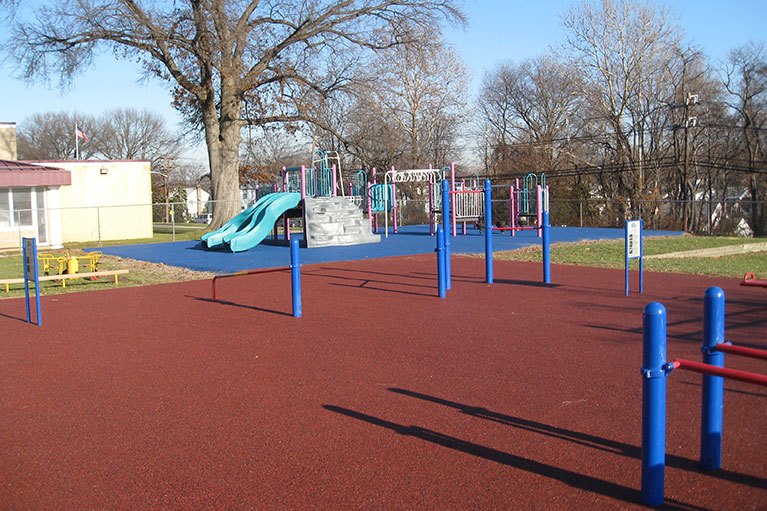As has been discussed in our previous blog, there are two primary types of playground surfaces: unitary and loose fill. Unitary surfaces are like household carpets: continuous, unbroken surfaces that come in either rolls or tiles. They are more expensive upfront to purchase and install; however, their long-term maintenance costs are less.
Loose fill surfaces are just that: small, loose, granular fill materials that are much less expensive to purchase and easier to install, provide excellent fall protection, and drain well. However, they also require more long-term maintenance and upkeep, because they are loose! With lots of children running around, kicking, jumping, sliding and having fun, loose materials scatter easily and can become thinned out. So, they must be replenished, smoothed out, and leveled from time to time.
When deciding on a provider of playground surfacing services, make sure your provider is an expert in all kinds of surfaces and can help you make an informed decision based on your needs.
In this blog, we will examine loose fill surfaces in more detail. Traditionally, loose fill surfacing includes:
- Engineered wood fiber mulch
- Shredded recycled rubber mulch
- Sand
- Pea gravel (pieces are about the size of a pea)
A key factor (maybe the only factor) in choosing a playground surfacing material, is safety. Government statistics state that almost 70 percent of playground injuries are due to falls. For that reason, the playground surface needs to offer a high degree of protection, resilience, and “give” – to attenuate the potential damage of a fall. Some important questions to consider in choosing a playground surfacing material:
- How high is the playground equipment?
- What depth is required for the surfacing?
- Where should surfacing be placed?
- Does it meet American Society for Testing & Materials standards and CPSC guidelines?
- Does it have a proven track record?
- How well does it meet durability, drainage, and accessibility (for physically challenged individuals) requirements?
Safety experts strongly recommend either rubber mulch or engineered wood fibers (EWF) as preferred loose fill playground surfaces, but only if they are poured/spread to a depth from 6 – 12 inches. At this depth, both materials provide excellent fall impact attenuation performance. However, it is also important to remember that meeting that standard means keeping up with regular, periodic maintenance/replenishment over the long term. Neither sand nor gravel provides the safety performance of rubber or wood fiber; they are no longer recommended for playground surfacing.
Contact us today to learn about our playground surfacing services. We are the proud owner of Sureplay International Rubber Surfacing, LLC, a leader in poured-in-place rubber safety surfacing services in the tri-state areas.

